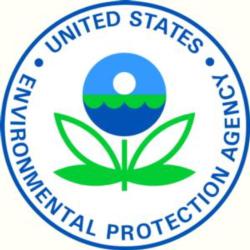EPA Expected To Up Ethanol Cap
 If E10 is rough on outboards, what is E15 likely to do? Anglers might be finding out for themselves in the coming months as the Environmental Protection Agency is on the verge of allowing the ethanol content in gasoline to increase from 10 percent by volume to 15 percent.
If E10 is rough on outboards, what is E15 likely to do? Anglers might be finding out for themselves in the coming months as the Environmental Protection Agency is on the verge of allowing the ethanol content in gasoline to increase from 10 percent by volume to 15 percent.
It’s expected that the EPA will grant a partial waiver to allow as much as 15 percent ethanol in fuel blends for use in late-model vehicles, but not to require it. That won’t sit well with the huge agricultural lobby, which has been pushing for an across-the-board 5 percent increase in ethanol content. It also won’t do much to allay the concerns of manufacturers of off-road engines, including those in the marine industry. E10, as gasoline with an ethanol rating of 10 percent is known, isn’t regarded as an efficient fuel for most engines. Ethanol, which in this country is generally refined from corn plants, has been blamed for fuel line and carburetor problems in outboards as a result of water condensation and other corroding elements.
“We’ve been led to believe that the EPA will grant a partial waiver allowing an increase in ethanol content from 10 to 15 percent,” says Matt Dunn, the legislative director for the National Marine Manufacturers Association. “In doing so, the EPA will admit it acknowledges that there are performance issues. E10 is not the best fuel for marine engines. E15 will be even worse for outboards and fuel systems.
“The E15 waiver is an ill-advised move. It’s going to create more product liability issues and warranty issues, and it will guarantee confusion in the marketplace.”
According to Dunn, various outboard and small-engine manufacturers are conducting their own tests on E15 and its effects on engines, but no conclusive results have been reached. Presumably, research and development will lead to new manufacturing processes that will overcome any deficiencies that E15 poses. A study involving cars and trucks found that E15 isn’t detrimental to late-model vehicles, at least not in the short term.
Ethyl alcohol as a fuel additive is nothing new. Among its champions during the first two decades of the 20th century were President Teddy Roosevelt and Henry Ford. Tetraethyl lead – the “Ethyl” that premium gasoline was known as during the latter half of the century – won out as an anti-knock ingredient in vehicle fuels. Tetraethyl lead is poisonous to humans and considered an environmental hazard, and in the U.S. it was phased out altogether in 1986 by EPA fiat. Ethyl alcohol eventually became the octane-enhancing ingredient of choice for automobiles, though there has been a lengthy debate regarding how much ethanol in gas is too much for the vast majority of vehicles on the road today.
Because the EPA didn’t mandate the switch from E10 to E15, it’s unclear what effect the new ruling will have on Main Street. Currently, most fuel distributors blend gasoline and ethanol up to the current 10 percent cap. However, because E15 isn’t mandatory, distributors might offer blends somewhere in between, depending on the market and the cost of ethanol relative to undiluted gasoline.
“Now, at most gas pumps, there are stickers that state that the ethanol content is up to 10 percent,” says Dunn. “Actually, it might range anywhere from about 6 percent to 10 percent. Finding unleaded gasoline without any ethanol in it is getting more difficult all the time. Soon it might be next to impossible to find a station that supplies anything less than E15. We’re not against ethanol per se, but more time should be taken to determine the problems that it causes in engines and find ways to correct them. That’s the responsible way to go about it. Get politics out of it.”